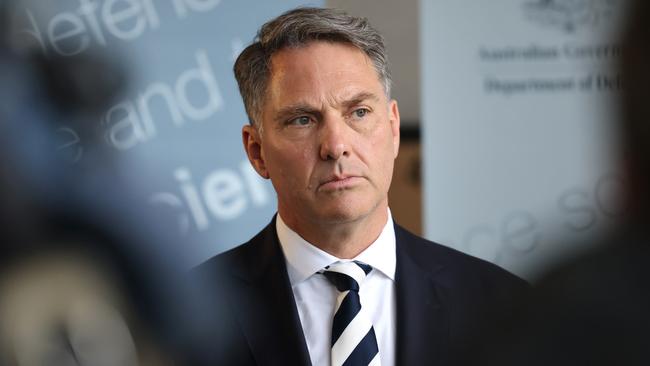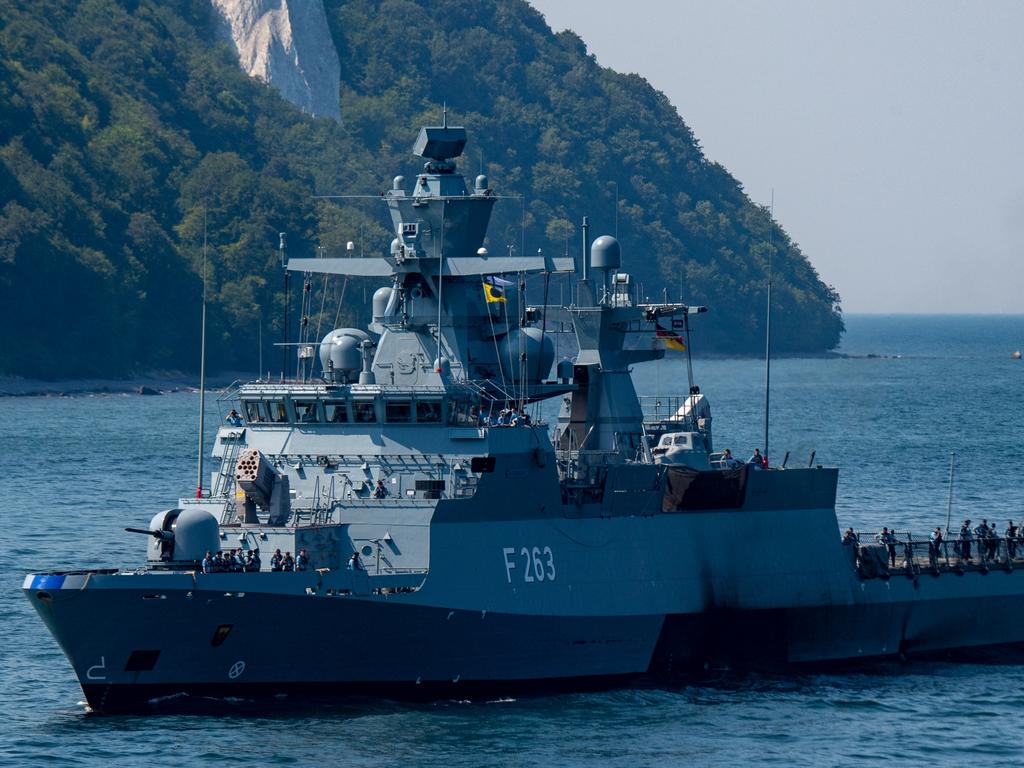Defence caught short on costs amid project blowouts
Defence projects are running a combined $6.5bn over budget and a cumulative 97 years late.

Major Defence projects are running a combined $6.5bn over budget and a cumulative 97 years late, as the Albanese government struggles to find the funds to meet surging military procurement costs.
A new budget analysis to be released by Defence Minister Richard Marles on Monday will identify 18 major procurements worth nearly $70bn suffering significant cost blowouts, and 28 that are running years behind schedule.
Mr Marles will lay the blame for the projects’ underperformance on the former government’s “chaotic” administration of the portfolio, in what is also an implicit swipe at the department he now runs, which was in charge of delivering the troubled acquisitions.
The minister will introduce new measures to regain control of procurement and sustainment, including the establishment of an independent projects office within the department, and new “early warning” systems to identify projects of concern.
He will also pledge to foster a new culture in Defence of “raising attention to emerging problems and encouraging and enabling early response” – something that may prove difficult for the notoriously change-resistant department.
“The former Coalition government’s investment in defence saw key projects blow out in both cost and time, money being flushed down the toilet and all the while they regaled in how much they were spending on defence,” Mr Marles said in a preview of his remarks. “Given the current strategic circumstances we face, we need to be better focused on the quality of the spend within Defence to ensure we are providing our ADF personnel with the best capability.”
The budget pain comes amid a surging Defence budget that is set to rise from $48.6bn in the March budget, or about 2 per cent of GDP, to 2.2 per cent by 2032.
The forecast Defence budget rise, to a projected $80bn-a-year, does not yet include the cost of delivering Australia’s nuclear submarines and expanding the size of the nation’s military.’
The behind-schedule projects include the $45bn Hunter-class frigates, the $3.6bn Arafura-class offshore patrol vessels, the C-27J Spartan transport aircraft, and the Evolved Cape-class patrol boats.
The P-8A Poseidon maritime surveillance aircraft, a battlefield command system and a series of Defence satellite projects are also on the list.
The analysis reveals that “a large share of the budget variations is due to factors such as exchange rates and price indexation” – factors that will also be out of the control of the Albanese government.
It also acknowledges that Defence projects are “complex undertakings at the cutting edge of technological, engineering and industrial capability and inevitably involve risk”.
Mr Marles will accuse the former government of failing to effectively manage project risks.
But he was warned in the department’s incoming government brief that Defence was “not a competitive employer” and faced an uphill battle to find and retain the skilled personnel it needed to deliver advanced new capabilities, including nuclear-powered submarines, guided missiles and advanced cyber and space systems.
The updated budget numbers will soar to new highs once the cost of the nuclear submarine program – that could run to more than $150bn – is incorporated. The figures also don’t include the cost of adding a promised 18,500 personnel to the Australian Defence Force and the Defence civilian workforce by 2030-49.
Treasurer Jim Chalmers said the government was dealing with big budget pressures in national security and defence, “compounded by the bungled projects and cost blow outs that the former government didn’t account for in the budget”.
“You only need to look around the world to appreciate that, on both fronts – economically and geopolitically – we live in uncertain and unpredictable times, making it even more critical that defence projects deliver value for money,” he said. “Our investments in defence and our steps to improve project management are a down payment on the stability of our region and the security and safety of Australians.”
The surging Defence costs will provide a stark backdrop to the government’s defence strategic review, which is expected to recommend major capability upgrades to respond to worsening strategic circumstances.
The competition for the Defence dollar is also intensifying between the services, with new Chief of Army Simon Stuart making a strong case in a recent interview with The Australian for 450 new infantry fighting vehicles worth up to $27bn.
He underlined the point in a speech last week, saying the ADF should be “relevant and credible in all domains”.
But the budget for the vehicles continues to be eyed the other service chiefs, who argue Australia’s next war will be fought on water or in the air.
One source of potential Defence funds is in driving down the number of contractors, consultants and other external service providers to the department, which soared to a record 34,880, according to March budget documents.





To join the conversation, please log in. Don't have an account? Register
Join the conversation, you are commenting as Logout